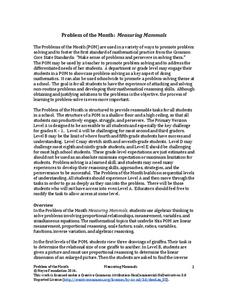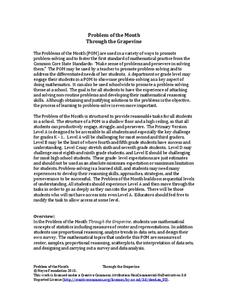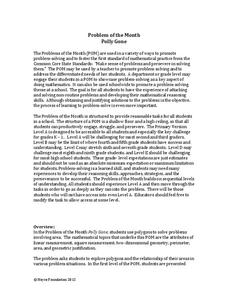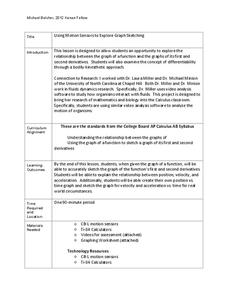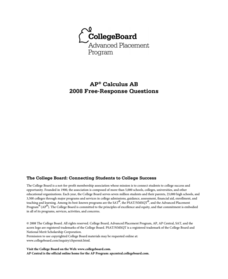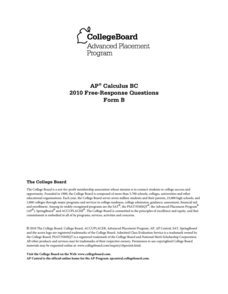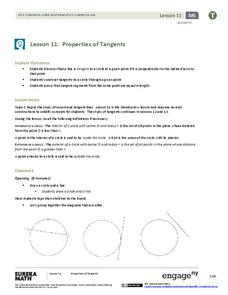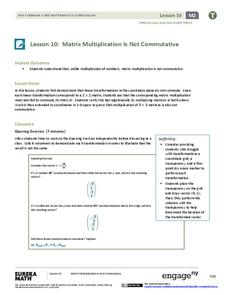Noyce Foundation
The Wheel Shop
Teach solving for unknowns through a problem-solving approach. The grouping of five lessons progresses from finding an unknown through simple reasoning to solving simultaneous equations involving three and four variables. Each lesson...
Noyce Foundation
Digging Dinosaurs
Build a function to solve problems rooted in archeology. A comprehensive set of five lessons presents problems requiring individuals to use functions. The initial lesson asks learners to find the possible number of dinosaurs from a...
Noyce Foundation
Measuring Mammals
Explore the meaning of scale and proportion with a set of five activities that examines the topic from elementary through high school. The first lessons explore ratio by examining pictures of different sizes. The next three activities...
Noyce Foundation
Through the Grapevine
Teach statistics by analyzing raisins. A thorough activity provides lesson resources for five levels to include all grades. Younger pupils work on counting and estimation, mid-level learners build on their understanding of the measures...
Noyce Foundation
Miles of Tiles
Create number sentences and equations to solve geometric problems. Each activity in the series of five asks young mathematicians to consider different-sized tiles to build structures according to specific criteria. The first activities,...
Noyce Foundation
First Rate
Explore distance and time factors to build an understanding of rates. A comprehensive set of problems target learners of all grade levels. The initial problem provides distance and time values and asks for the winner of a race. Another...
Noyce Foundation
Movin 'n Groovin
Examine the consequences of varying speed. An engaging set of five problem sets challenges young mathematicians by targeting a different grade level from K-12. In the initial lesson, scholars make conclusions about the time it...
Noyce Foundation
Poly-Gone
Investigate polygons from rectangles to triangles to octagons. Each level of the five-problem series targets a different grade level. Beginning with the level A problem, learners examine the relationship between area and perimeter by...
Kenan Fellows
Using Motion Sensors to Explore Graph Sketching
Get moving to a better understanding of graphs of derivatives. Using motion sensors, scholars vary their velocities to create graphs of the first derivative of a function. The activity challenges groups to first create a script of the...
College Board
2001 AP® Calculus AB Free-Response Questions
Take a closer look at the exam. Released items from the 2001 Calculus AB exam allow teachers and pupils to view how the exam presents questions. Scholars use the questions to prepare for the test and compare their responses to the...
College Board
2000 AP® Calculus AB Free-Response Questions
Gain an upper hand in preparation for the exam. Teachers and pupils use six released questions to gain an understanding of the AP® Calculus exam. By answering the questions, scholars see how different concept of the course show up on the...
College Board
2008 AP® Calculus AB Free-Response Questions
Get the most out of released items. Teachers use the included materials to learn about test-takers' performance on released free-response questions. Pupils respond to the questions and compare their responses to sample scored responses...
College Board
2000 AP® Calculus BC Free-Response Questions
How are concepts divided? Pupils use the AP® Calculus free-response questions to see how the exam addresses concepts. The concepts are divided into those that use calculators and others that do not. Calculator items require finding...
College Board
2008 AP® Calculus BC Free-Response Questions
The AP® exam is not just about the calculations. By reviewing the free-response questions from 2008, teachers and pupils see that several items require justifications and explanations to gain full credit. The chief reader even points out...
College Board
2006 AP® Calculus AB Free-Response Questions Form B
An exam divides the six free-response questions into calculator use and no calculator use items. The non-calculator items are conceptual in nature and test whether pupils understand the calculus concepts. Scholars explain their answers...
College Board
2011 AP® Calculus BC Free-Response Questions
Does the exam look pupils expected? Released free-response questions from the AP® Calculus BC exam allow teachers and pupils to see and practice with actual exam questions. Three of the questions come from the AB portion of the course...
College Board
2002 AP® Calculus AB Free-Response Questions Form B
Become better at the test concepts. An educational resource presents six free-response questions from the AP® Calculus AB exam. Pupils use the items to practice the content, which contains concepts ranging from particle motion to ships...
College Board
2010 AP® Calculus BC Free-Response Questions Form B
Keep moving along a curve. Two items in the set of released free-response questions from the 2010 AP® Calculus BC exam involve movement along a graph. One involves particle motion along a polar curve while the other uses a squirrel...
College Board
2007 AP® Calculus BC Free-Response Questions Form B
There is just a single real-world problem. Released free-response items from the 2007 AP® Calculus BC Form B contains only one real-world question. The question involves rate of change of wind chill scenario. The mathematical problems...
College Board
2002 AP® Calculus BC Free-Response Questions Form B
Though the items may be older, they still provide information. Released free-response items from the 2002 AP® Calculus BC exam provide teachers and pupils with information about how topics appear on the exam. Questions come from the AB...
Flipped Math
Calculus AB/BC - Selecting Procedures for Derivatives
Don't get lost trying to memorize all those derivative rules. Scholars review the different methods at their disposal to determine derivatives from Units 2 and 3. They fill out a graphic organizer and then complete a set of practice...
EngageNY
Properties of Tangents
You know about the tangent function, but what are tangent lines to a circle? Learners investigate properties of tangents through constructions. They determine that tangents are perpendicular to the radius at the point of tangency,...
EngageNY
Matrix Multiplication Is Not Commutative
Should matrices be allowed to commute when they are being multiplied? Learners analyze this question to determine if the commutative property applies to matrices. They connect their exploration to transformations, vectors, and complex...
EngageNY
Directed Line Segments and Vectors
Investigate the components of vectors and vector addition through geometric representations. Pupils learn the parallelogram rule for adding vectors and demonstrate their understanding graphically. They utilize the correct notation and...




